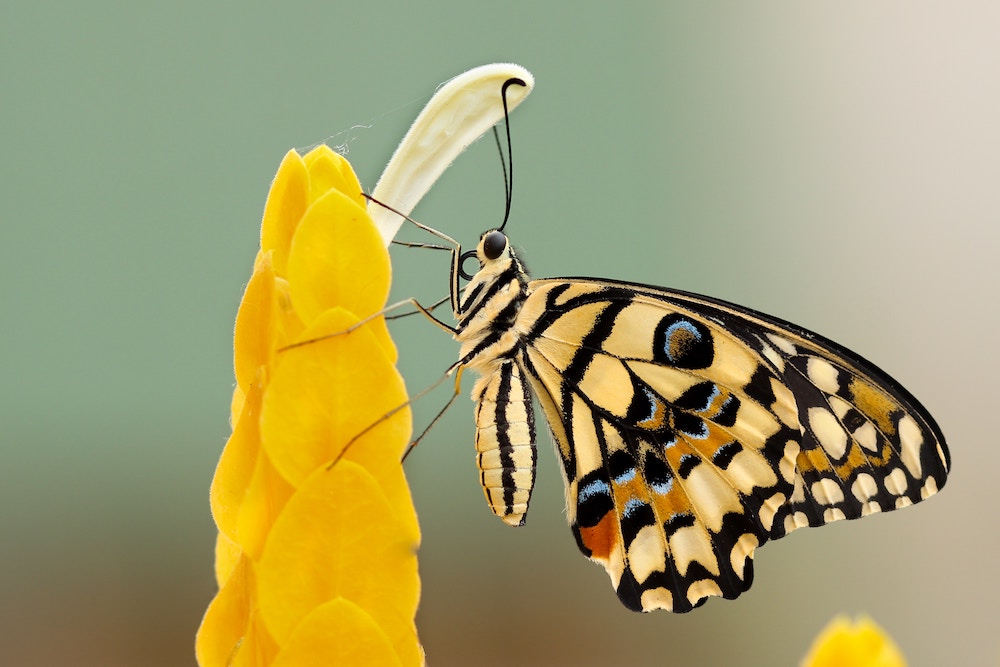This article explains some very interesting and surprising research undertaken at Yale university in the USA.
Gender-bending butterflies observed in Yale study
If you’re a male butterfly looking to mate, locate the females raised in cooler temperatures and you can sit back and let them woo you. Yale University researchers identified this gender reversal behavior in a strain of the Bicyclus anynana, a butterfly found in Malawi. This is the first species where role reversal has been observed. The female caterpillars raised in cool, dry environments became adult butterflies that not only actively courted males but also grew flashier eyespots on their wings. Eyespots, the circular designs visible on the butterfly’s wings, are the sexual ornaments males use to attract females. “We found a new mechanism on why both sexes may have sexual ornaments,” said Katy Prudic, lead author of the 2-year study that appeared in the journal Science last week.
The Bicyclus anynana, also known as the squinting bush brown, originates from central, eastern and southern Africa. In their wet and warm native environment, females select the persistent males based on their eyespots. This species is frequently used as an animal model for studying evolutionary wing patterns and visual signals, according to Prudic. The evolutionary ecologist and lecturer at Yale started investigating why both males and females have eyespots. She and co-author Antonia Monteiro hypothesized that temperature could play a role in the development of the showy ornamentation. They tested this theory allowing one set of caterpillars to be reared at around 63 degrees Fahrenheit (mimicking the cool, dry season) and another set at around 81 degrees Fahrenheit (mimicking the warm, wet season). “We didn’t expect to see a behavioral difference,” Prudic said. “We knew there was a difference in wing morphology, but this was an unpredicted result.”
With this being the first species in which a change like this was observed, questions arise about what other behaviors could be modified based on developmental influences. Also the temperature-specific parameter begs the question about what could happen with climate change affecting organisms with developmental body features and behaviors based on environmental context. “These types of things are species specific, so it’s hard to extrapolate,” said Doug Taron, curator of biology at the Peggy Notebaert Nature Museum in Chicago.
Researchers also found that females raised in cooler temperatures tended to live longer. A possible reason for this is that males raised in cool temperatures tend to give females a more generous nutritional “gift.” Along with sperm, the cool-temperature reared males deliver a package of nutrients to the female during mating. It’s a trade-off for the males, which are choosy when selecting a lucky lady to give their nutrients to because once they did, they lived a much shorter life. The females with the flashier decorations stand a better chance of winning the prize of a prolonged lifespan.
Next up, Prudic plans to investigate at what point in development the change occurs: Does the behavioral and wing pattern change occur at the same time? She also wants to look into the nutrient difference between dry and wet season males. “This species is an emerging model,” Prudic said. “It’s becoming well-studied.”

Leave a Reply